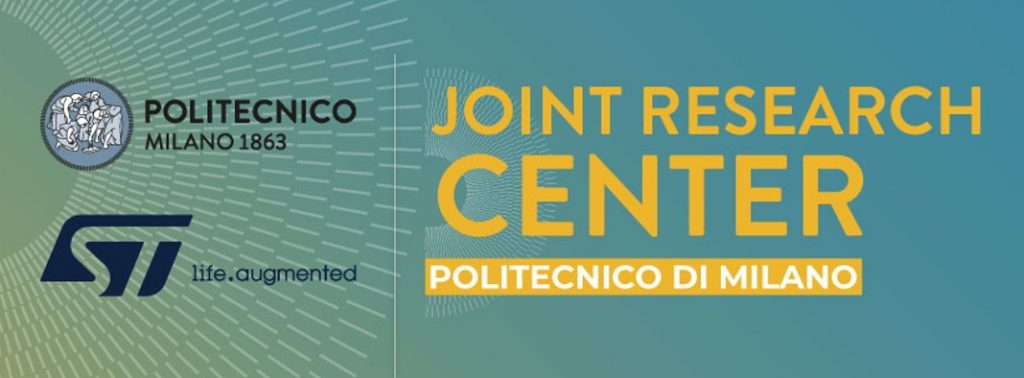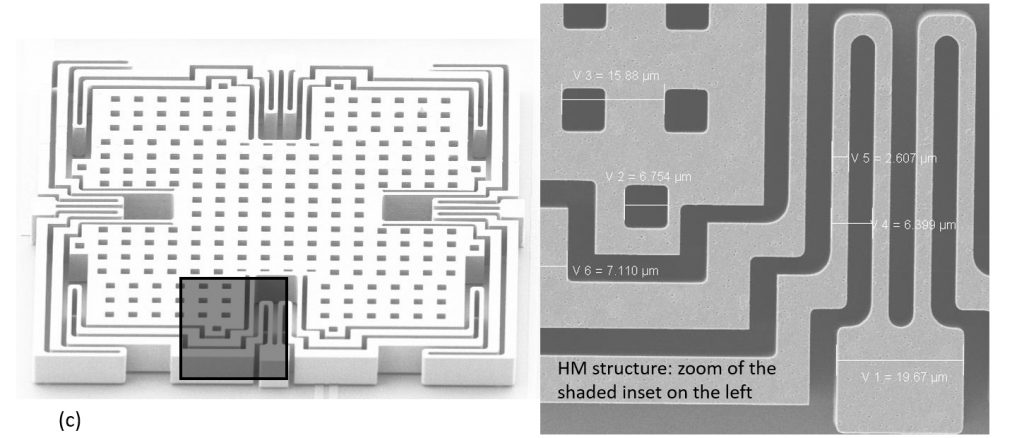Since 2003 I’ve been developing intensive research in the field of Microsystems (MEMS), initially focused on the mechanical characterization of materials, with the seminal paper
Corigliano A., De Masi B., Frangi A., Comi C., Villa A., Marchi M., Mechanical characterization of polysilicon through on chip tensile test, JMEMS, vol 13, pp. 200-219, 2004
and later extended to multiple areas of design and multiphysics simulation as detailed in the books:
A. Frangi, N. Aluru, C. Cercignani, S. Mukherjee eds., Advances in Multiphysics Simulation and experimental testing of MEMS, Imperial College Press, London, 2008
A. Corigliano, R. Ardito, C. Comi, A. Frangi, A. Ghisi, S. Mariani, Mechanics of Microsystems, Wiley, 2018
From 2007 to 2020 I’ve been coordinating with Alberto Corigliano research contracts by STMicroelectronics for a total of over 1.6 Meuro on the topic Analysis and mechanical modeling of Micro-Electro-Mechanical-Systems. You can visit here our website. We have progressively extended the activity to other Departments of the Politecnico (Electronics, Chemistry, Mathematics) creating de-facto a Joint Research Center which has been formalized and extended in 2018
Since 2018 I am a member of the board of the first Joint Research Center, Politecnico di Milano-STMicroelectronics, known as JRC MEMS, a 5 years program with approx. 4Meuro funding to various projects developed within Politecnico.
Since 2021 I am a member of the Scientific-Technical board of the new Joint Research Center, Politecnico di Milano-STMicroelectronics, known as JRC STEAM, a 5 years program with approx. 50Meuro funding to various projects developed within the Politecnico

Selected research topics
Near vacuum gas damping
Piezomaterial modelling
Anchor losses
Nonlinear dynamics
Deep learning
Near vacuum gas damping
Mechanical dissipation strongly affects the quality factor Q of MEMS. Among the different sources of mechanical dissipation, gas damping often provides a meaningful contribution. In near-vacuum conditions, typical of several MEMS applications like gyroscopes, resonators or magnetometers, the length scale and the working pressure are such that the collisions between molecules can be neglected. This regime, known as free-molecule, lends itself to the development of deterministic approaches based on the collisionless Boltzmann equation.
An innovative simulation tool based on boundary integral equations (BIE) has been proposed in Frangi et al. (2009) and Frangi (2009) and improved in Fedeli and Frangi (2017) We have proposed a simplified and operative tool that can be easily applied to obtain a sufficiently accurate estimate of the damping coefficient for many typical configurations of MEMS. More info can be found here
Piezomaterial modelling
under construction
Anchor losses
under construction


